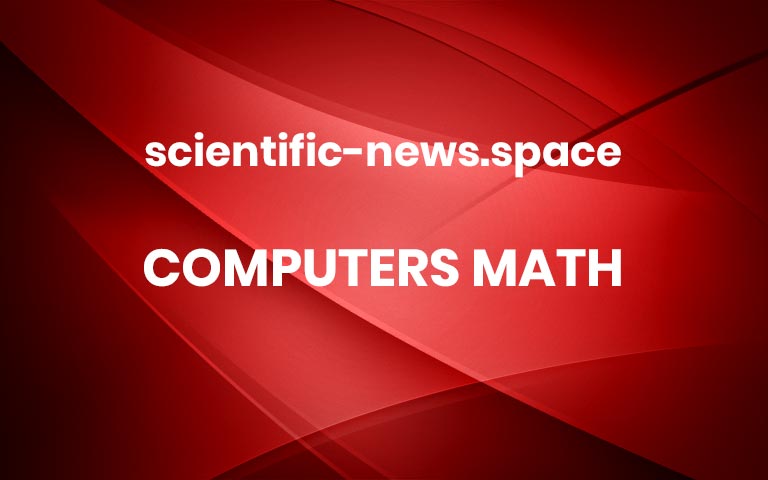Most scientific data never reach their full potential to drive new discoveries.
Out of every 100 datasets produced, about 80 stay within the lab, 20 are shared but seldom reused, fewer than two meet FAIR standards, and only one typically leads to new findings.
The consequences are significant: slower progress in cancer treatment, climate models that lack sufficient evidence, and studies that cannot be replicated.
To change this, the open-science publisher Frontiers has introduced Frontiers FAIR² Data Management, described as the world’s first comprehensive, AI-powered research data service. It is designed to make data both reusable and properly credited by combining all essential steps — curation, compliance checks, AI-ready formatting, peer review, an interactive portal, certification, and permanent hosting — into one seamless process. The goal is to ensure that today’s research investments translate into faster advances in health, sustainability, and technology.
FAIR² builds on the FAIR principles (Findable, Accessible, Interoperable and Reusable) with an expanded open framework that guarantees every dataset is AI-compatible and ethically reusable by both humans and machines. The FAIR² Data Management system is the first working implementation of this model, arriving at a moment when research output is growing rapidly and artificial intelligence is reshaping how discoveries are made. It turns high-level principles into real, scalable infrastructure with measurable impact.
Dr. Kamila Markram, co-founder and CEO of Frontiers, explains:
“Ninety percent of science vanishes into the void. With Frontiers FAIR² Data Management, no dataset and no discovery need ever be lost again — every contribution can now fuel progress, earn the credit it deserves, and unleash science.”
AI at the Core
Work that once required months of manual effort — from organizing and verifying datasets to generating metadata and publishable outputs — is now completed in minutes by the AI Data Steward, powered by Senscience, the Frontiers venture behind FAIR².
Researchers who submit their data receive four integrated outputs: a certified Data Package, a peer-reviewed and citable Data Article, an Interactive Data Portal featuring visualizations and AI chat, and a FAIR² Certificate. Each element includes quality controls and clear summaries that make the data easier to understand for general users and more compatible across research disciplines.
Together, these outputs ensure that every dataset is preserved, validated, citable, and reusable, helping accelerate discovery while giving researchers proper recognition. Frontiers FAIR² also enhances visibility and accessibility, supporting responsible reuse by scientists, policymakers, practitioners, communities, and even AI systems, allowing society to extract greater value from its investment in science.
Flagship Pilot Datasets SARS-CoV-2 Variant Properties — Covering 3,800 spike protein variants, this dataset links structural predictions from AlphaFold2 and ESMFold with ACE2 binding and expression data. It offers a powerful resource for pandemic preparedness, enabling deeper understanding of variant behavior and fitness. Preclinical Brain Injury MRI — A harmonized dataset of 343 diffusion MRI scans from four research centers, standardized across protocols and aligned for comparability. It supports reproducible biomarker discovery, robust cross-site analysis, and advances in preclinical traumatic brain injury research.
Environmental Pressure Indicators (1990-2050) — Combining observed data and modeled forecasts across 43 countries over six decades, this dataset tracks emissions, waste, population, and GDP. It underpins sustainability benchmarking and evidence-based climate policy planning. Indo-Pacific Atoll Biodiversity — Spanning 280 atolls across five regions, this dataset integrates biodiversity records, reef habitats, climate indicators, and human-use histories. It provides an unprecedented basis for ecological modeling, conservation prioritization, and cross-regional research on vulnerable island ecosystems. Researchers testing the pilots noted that Frontiers FAIR² not only preserves and shares data but also builds confidence in its reuse — through quality checks, clear summaries for non-specialists, and the reliability to combine datasets across disciplines, all while ensuring scientists receive credit.
All pilot datasets comply with the FAIR² Open Specification, making them responsibly curated, reusable, and trusted for long-term human and machine use so today’s data can accelerate tomorrow’s solutions to society’s most pressing challenges.
Recognition and Reuse
Each reuse multiplies the value of the original dataset, ensuring that no discovery is wasted, every contribution can spark the next breakthrough, and researchers gain recognition for their work.
Dr. Sean Hill, co-founder and CEO of Senscience, the Frontiers AI venture behind FAIR² Data Management, notes:
“Science invests billions generating data, but most of it is lost — and researchers rarely get credit. With Frontiers FAIR², every dataset is cited, every scientist recognized — finally rewarding the essential work of data creation. That’s how cures, climate solutions, and new technologies will reach society faster — this is how we unleash science.”
What Researchers Are Saying
Dr. Ángel Borja, Principal Researcher, AZTI, Marine Research, Basque Research and Technology Alliance (BRTA):
“I highly [recommend using] this kind of data curation and publication of articles, because you can generate information very quickly and it’s useful formatting for any end users.”
Erik Schultes, Senior Researcher, Leiden Academic Centre for Drug Research (LACDR); FAIR Implementation Lead, GO FAIR Foundation:
“Frontiers FAIR² captured the scientific aspects of the project perfectly.”
Femke Heddema, Researcher and Health Data Systems Innovation Manager, PharmAccess:
“Frontiers FAIR² makes the execution of FAIR principles smoother for researchers and digital health implementers, proving that making datasets like MomCare reusable doesn’t have to be complex. By enabling transparent, accessible, and actionable data, Frontiers FAIR² opens the door to new opportunities in health research.”
Dr. Neil Harris, Professor in Residence, Department of Neurosurgery, Brain Injury Research Center, University of California, Los Angeles (UCLA):
“Implementation of [Frontiers] FAIR² can provide an objective check on data for both missingness and quality that is useful on so many levels. These types of unbiased assessments and data summaries can aid understanding by non-domain experts to ultimately enhance data sharing. As the field progresses to using big data in more disparate sub-disciplines, these data checks and summaries will become crucial to maintaining a good grasp of how we might use and combine the multitude of already acquired data within our current analyses.”
Maryann Martone, Chief Editor, Open Data Commons:
“[Frontiers] FAIR² is one of the easiest and most effective ways to make data FAIR. Every PI wants their data to be findable, accessible, comparable, and reusable — in the lab, with collaborators, and across the scientific community. The real bottleneck has always been the time and effort required. [Frontiers] FAIR² dramatically lowers that barrier, putting truly FAIR data within reach for most labs.”
Dr. Vincent Woon Kok Sin, Assistant Professor, Carbon Neutrality and Climate Change Thrust, Society Hub, The Hong Kong University of Science and Technology (HKUST):
“[Frontiers] FAIR² makes our global waste dataset more visible and accessible, helping researchers worldwide who often struggle with scarce and fragmented data. I hope this will broaden collaboration and accelerate insights for sustainable waste management.”
Dr. Sebastian Steibl, Postdoctoral Researcher, Naturalis Biodiversity Center and the University of Auckland:
“True data accessibility goes beyond just uploading datasheets to a repository. It means making data easy to view, explore, and understand without necessarily requiring years of training. The [Frontiers] FAIR² platform, with an AI chatbot and interactive visual data exploration and summary tools, makes our biodiversity and environmental data broadly accessible and usable not just to scholars, but also practitioners, policymakers, and local community initiatives.” More



